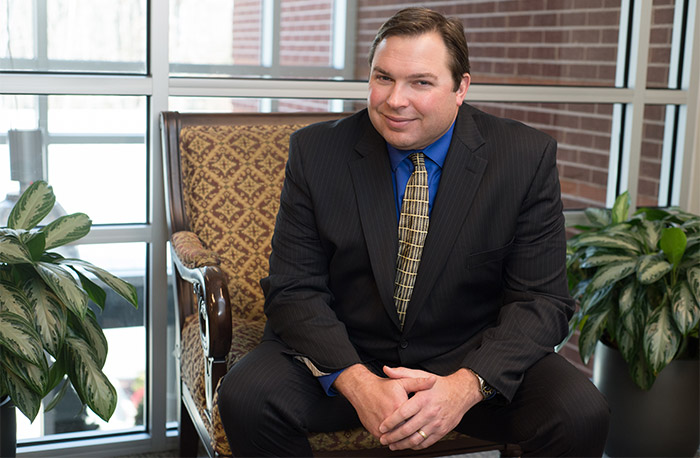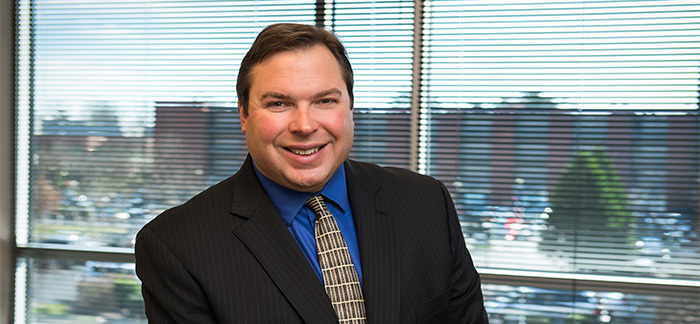Taking charge: Responding to markets and clients
Taking charge: Responding to markets and clients

Rusty Woods • Portsmouth, VA
Lincoln Financial Securities Corporation
Rusty Woods thinks that responsiveness is just about the most important aspect to his successful practice as an investment advisor representative for Lincoln Financial Securities Corporation—and that’s apparent in every element of his business.
Woods believes it is paramount in developing new client relationships, in client retention and satisfaction, in his day-to-day relationship with Lincoln, and in his partnerships with third-party money managers. This can cover everything from his logging thousands of miles to hold face-to-face client reviews to his desire to engage money managers who facilitate the ease of doing business for client accounts.
“Responsiveness” also frames his views on active investment management, where he is a strong advocate of taking charge of the investment environment, rather than adopting what he calls a “wait and pray” attitude.
Over his 20 years of experience as an advisor, Woods has seen a vast change in the demeanor of equity markets and the attitudes of his client base. He is very respectful of market volatility, which he knows will not remain absent forever, and thinks a more proactive, responsive way of managing money is required.

At the end of 2013, the accounts of Woods’ nearly 500 clients were valued at roughly $50 million. Woods says, “A large percentage of my client base is made up of working-class individuals and their families, which is representative of our geographic area here in Virginia.
“They might not have the largest account balances—though some are quite impressive—but they all generally recognize the importance of asset growth and a steady income stream in planning for retirement. They are also very fearful of taking losses in their accounts, based on what they have seen over the past 15 years. Not running out of money when they’re retired is their primary concern.
“I explain my thinking in terms that clients can relate to. Just as their occupations have likely changed and evolved dramatically over the past 20 years, so have many aspects of investment management. Using the tools of active management, I can help them feel more in control of their investment outcomes and, ultimately, more in charge of their futures.”
“This allows clients to sleep at night, knowing their income needs are met, and to be more comfortable allocating dollars to equities.”
Woods finds that pre-retirees and those already retired are most comfortable with what he calls a “split bucket,” using a combination of annuity products and an actively managed equity portfolio to generate a stable income from the former and take advantage of trending markets with the latter.
He says of these approaches, “The annuity products provide steady income, making sure the lights stay on and food is on the table, so to speak. This allows clients to sleep at night, knowing their income needs are met, and to be more comfortable allocating dollars to equities. Most of the annuity products I use have an income provision.
“While we plan on worst-case scenarios, we also can see some appreciation in the underlying principal if markets cooperate, even though the client is taking income.”
But bear markets exist, which is why Woods uses risk management to make up the second half of his split-bucket approach.
“With the managed equity portion, we develop a risk profile to see how conservative or aggressive their specific approach can be. In all cases, I am looking for asset growth over time with a high degree of risk management built in. I also look to active money managers to provide the expertise and professionalism to handle the ups and downs of the markets. I use various strategies that can leverage or go inverse of the market, some more aggressive than others.
“My clients come to appreciate the fact that they can make money in both up and down markets. But the key to active management for me is asset protection over the long term. I think it was Will Rogers who said he was more concerned with return of capital than return on capital.”
Woods follows this philosophy as the fundamental starting point for his approach to investing.
“Of course, we look to managers to maximize returns within risk parameters in any market condition. That to me sums up active management.”

Woods has recently been adding another level of responsiveness for his clients where the opportunity exists in certain workplace 401(k)s. He sees no reason that his clients’ retirement funds should go without a third-party money manager.
He says, “Many of my clients saw the extreme drop in the markets in 2008 and panicked out of equities in their 401(k)s … and still have yet to see their accounts recover. With third-party money managers in place, we think we can work to prevent that from happening in the future.
“With certain self-directed accounts allowing for third-party management, clients can now have a high degree of flexibility and choice for most, if not all, of their retirement money. I think active management of 401(k)s, utilizing third-party managers, is the wave of the future and something I am extremely focused on going forward.”
Disclosure: Rusty Woods is a registered representative of Lincoln Financial Securities Corporation (LFSC). LFSC is a member of the Financial Industry Regulatory Authority (FINRA), and the Securities Investors Protection Corporation. Lincoln Financial Securities Corporation is an investment advisor registered with the Securities and Exchange Commission.
Photography by Odd Moxie Studios & Design

